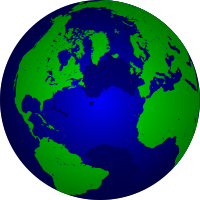
Photo from wikipedia
ABSTRACT A new 30-m spatial resolution global shoreline vector (GSV) was developed from annual composites of 2014 Landsat satellite imagery. The semi-automated classification of the imagery was accomplished by manual… Click to show full abstract
ABSTRACT A new 30-m spatial resolution global shoreline vector (GSV) was developed from annual composites of 2014 Landsat satellite imagery. The semi-automated classification of the imagery was accomplished by manual selection of training points representing water and non-water classes along the entire global coastline. Polygon topology was applied to the GSV, resulting in a new characterisation of the number and size of global islands. Three size classes of islands were mapped: continental mainlands (5), islands greater than 1 km2 (21,818), and islands smaller than 1 km2 (318,868). The GSV represents the shore zone land and water interface boundary, and is a spatially explicit ecological domain separator between terrestrial and marine environments. The development and characteristics of the GSV are presented herein. An approach is also proposed for delineating standardised, high spatial resolution global ecological coastal units (ECUs). For this coastal ecosystem mapping effort, the GSV will be used to separate the nearshore coastal waters from the onshore coastal lands. The work to produce the GSV and the ECUs is commissioned by the Group on Earth Observations (GEO), and is associated with several GEO initiatives including GEO Ecosystems, GEO Marine Biodiversity Observation Network (MBON) and GEO Blue Planet.
Journal Title: Journal of Operational Oceanography
Year Published: 2018
Link to full text (if available)
Share on Social Media: Sign Up to like & get
recommendations!